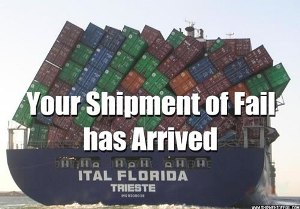Zero Hedge has always been fascinated by the behemoths of securities lending (or not so much lately) State Street and Bank Of New York: these firms, which allegedly had just marginal toxic exposure, were in the front lines for the TARP bailout and have traditionally been handled with velvet gloves by the administration. In fact, many would say the custodian firms are in a league of importance much higher than even Goldman or JP Morgan as with their repo activity, security lending and cash collateral reinvestment, they are the de facto center of the shadow banking system.
A Cliff notes version of the stock lenders' Modus Operandi, sent in compliments of a reader:
- In the securities lending arb, stocks and bonds are lent out by custodians and investment managers. The loan is collateralized by the borrower with cash, the lender promises the borrower a return on that cash and then invests the cash in repo and short-term debt at a spread to that promised rate of return. The sec lending market is in the trillions. This market is basically rolling overnight repo right now as it tries to dig itself out of the MTM/liquidity hole.
- Many of the Fed/Treasury balance sheet efforts have been basically attempts to supplant securities lenders. Sec lending funds were the biggest buyers of 1-3yr FRNs (hence, TLGP). Lenders were also the biggest buyers of AAA cards and autos (read TALF 1.0). They were the second-biggest buyers of ABCP after 2a7 funds (ergo AMLF). Indirectly they were the largest funder of LT2 bank debt (via SIVs MTNs). They're large repo counerparties, and did everything from short-dated CDS to liquidity put options on Canadian levered super-senior CDOs.
- Many stock lending funds, which have similar accrual accounting regimes to '40 Act money-market funds, have broken the buck but are still trading at $1. for example see the section beginning "We may be exposed to customer claims" on p.11. What does this mean? Not only are certain securities lending providers opening themselves up to significant litigation risk but, importantly, clients in stocks can't reallocate to bonds (or vice-versa), since the sec lending funds aren't letting them out (except in-kind). Finally, of course, as long as sec lenders remain hurt but unsupplanted, they stay short duration, which extracts hundreds of billions of $$ in term financing capacity out of the market. Fed won't act as a lender of last resort since they're still smarting from the AIG sec lending bail-out they didn't see coming.
Which is why we were greatly troubled when we learned recently on good authority that Federal representatives may have opened multiple undisclosed-type accounts with none other than State Street Global Advisors over the past few months. All of these accounts are allegedly handled by one single trader, who is cocooned and isolated from interaction with other partners.
Zero Hedge can, as of yet, not vouch for this being 100% factual and is asking readers who may have additional knowledge of the situtation to please come forward and share their views (tips@zerohedge.com). If, indeed, the Federal Reserve or other derivatives of the administration, are now directly involved in trading, managing repo terms, stock lending, collateral distribution and other liquidity-crucial aspects of what was once an efficient market, then indeed this rally could be written off not merely as the biggest short covering rally of all time, but one that has been explicitly orchestrated by those who should be most impartial to an efficiently working market.

No comments:
Post a Comment